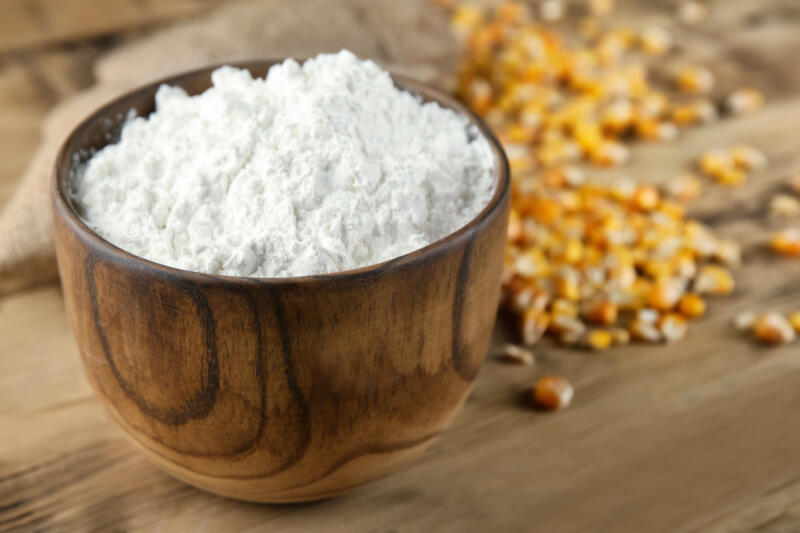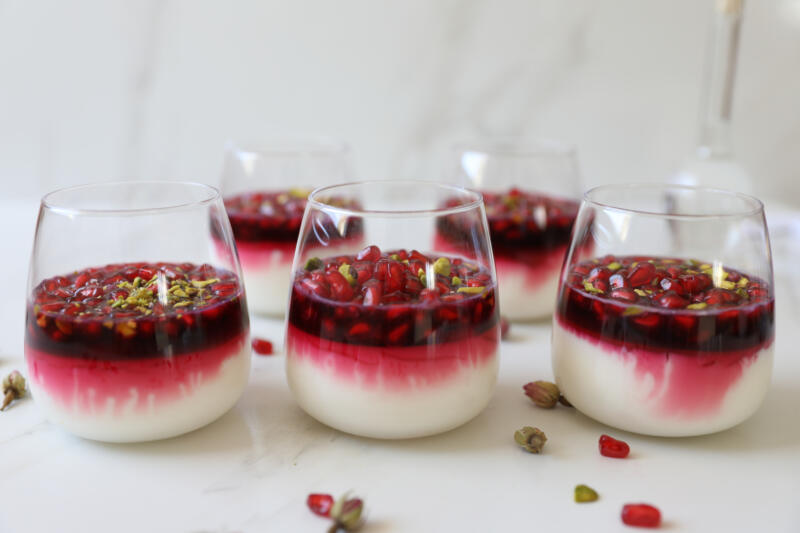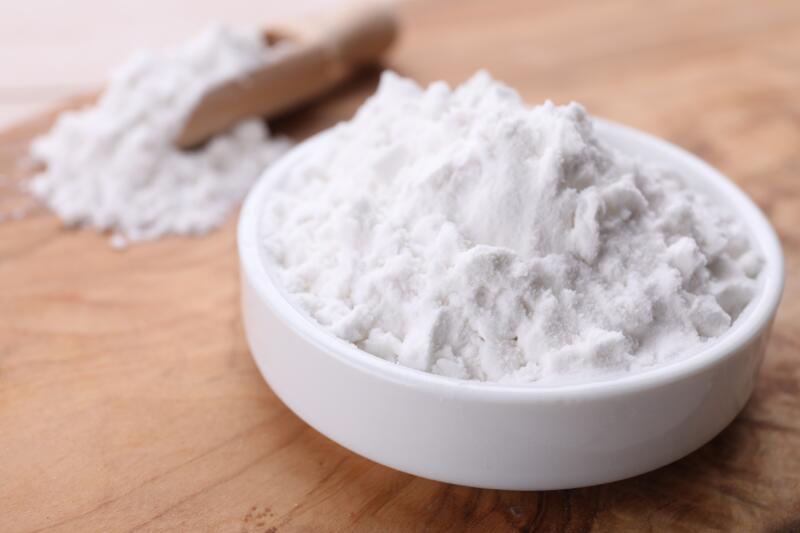While cooking, it’s common for many of us to frequently find ourselves reaching for two specific ingredients: cornstarch and baking soda.
Both are white, powdery substances that seem quite similar at first glance.

However, the differences between cornstarch and baking soda are significant, each playing a unique role in the culinary world.
Whether you are whipping up a thick, velvety sauce or baking a batch of fluffy muffins, understanding these differences will play a significant role.
In this article:
Difference Between Cornstarch and Baking Soda
While those two powders may seem similar at first glance, they serve different purposes in cooking and baking.
Cornstarch is mainly employed to thicken a variety of recipes.
Common dishes where cornstarch is used include sauces, stir-fries, soups, pie fillings, custards, and gravies.
When heated, the starch molecules in cornstarch expand, absorbing liquid and thickening the mixture.
On the other hand, baking soda functions as a leavening agent in baking.
It interacts with acidic components to release carbon dioxide, giving baked items a lift and a light texture.
Baking soda is a key ingredient in recipes like cookies, muffins, and cakes.
Properties of Cornstarch

Cornstarch, a fine, white powder derived from the endosperm of corn kernels, is a versatile ingredient with a myriad of uses in the kitchen.
Its unique properties, stemming from its chemical composition, make it an indispensable tool in cooking and baking.
Let’s explore the properties of cornstarch in more detail.
Chemical Composition
Cornstarch is a carbohydrate extracted from corn.
Its chemical composition is primarily made up of long chains of glucose molecules, which are simple sugars.
These chains form two types of molecules: amylose and amylopectin.
The ratio of these two components gives cornstarch its unique characteristics, including its gelatinization properties and its ability to form a paste when mixed with water.
Uses in Cooking and Baking
Cornstarch is a culinary chameleon with a wide range of uses in cooking and baking.
Its primary role is as a thickening agent, used to thicken sauces, gravies, and pie fillings.
Thickening Agent

The thickening ability of cornstarch is one of its most notable properties.
When combined with a chilled liquid, it creates a mixture that can be introduced to warm liquids for thickening purposes.
As the mixture heats, the cornstarch granules absorb the liquid and swell, thickening the mixture.
When cornstarch is heated in a liquid, the heat causes the amylose and amylopectin molecules to swell, absorbing the liquid and thickening the mixture.
This process, known as gelatinization, transforms runny liquids into thick, glossy sauces, gravies or pie fillings.
Taste
In terms of taste, cornstarch is neutral—it doesn’t have a distinctive taste, allowing the flavors of the other ingredients to shine through.
Substitutes for Cornstarch
There are several alternatives that can be used in its place:
- Flour,
- Arrowroot,
- Potato starch,
- Tapioca flour,
- Rice flour.
Each of these alternatives has its own unique properties and uses.
For example, flour is a common substitute in sauces and gravies, while arrowroot is often used in clear sauces due to its neutral flavor and clear gel.
Potato starch and tapioca flour are popular in gluten-free baking, and rice flour can be used to thicken soups and stews.
Properties of Baking Soda

Baking soda, also known as sodium bicarbonate, is a common ingredient found in almost every kitchen.
Chemical Composition
Baking soda, or sodium bicarbonate, is a white crystalline powder with the chemical formula NaHCO₃.
It consists of sodium ions (Na+) and bicarbonate ions (HCO₃-).
The bicarbonate ion is an amphiprotic species, meaning it can act as both an acid and a base, which is key to baking soda’s functionality in cooking and baking.
This unique chemical composition allows baking soda to react with both acids and bases, producing carbon dioxide gas as a byproduct, which is crucial for its leavening properties.
Common Uses in Cooking and Baking
Baking soda is the secret ingredient that makes pancakes fluffy, waffles light, and biscuits rise to perfection.
Leavening Agent Ability

When combined with acidic ingredients such as lemon, vinegar, buttermilk, yogurt, baking soda undergoes a chemical reaction, releasing carbon dioxide gas.
This gas gets trapped within the dough or batter, causing it to rise and resulting in light, airy baked goods.
Taste
If baking soda is used in the correct proportion in a recipe, it typically does not impart a noticeable taste to the finished baked goods.
However, baking soda can indeed influence the taste of a pastry or other baked goods if used in excess. It can give a slightly bitter or soapy taste to the food.
This is why it’s important to use the correct amount as specified in the recipe.
If you’re noticing a bitter taste, it might be due to too much baking soda.
In some specific recipes, the slight alkaline flavor of baking soda is actually desired. For example, in making certain types of cookies or pretzels, a small amount of baking soda is used to contribute to the distinctive flavor
Substitutes for Baking Soda
While baking soda is a common ingredient, there are times when a substitute is needed.
Baking powder is the best alternative as it contains baking soda and an acid, making it a complete leavening agent.
However, it needs to be used in larger amounts than baking soda.
Other alternatives include baker’s ammonia and potassium bicarbonate, though these may impart a different flavor or texture.
In a pinch, a combo of salt and self-rising flour can also be used, as self-rising flour contains a leavening agent.
Closing Thoughts
From thickening your favorite gravy with cornstarch to achieving the perfect rise in your baked goods with baking soda, these ingredients truly are the unsung heroes of many kitchens.
Their roles, though often overlooked, are pivotal in transforming simple ingredients into delectable dishes.
If you have any questions or comments, or if you’d like to share your experiences with cornstarch and baking soda, feel free to drop a line below.